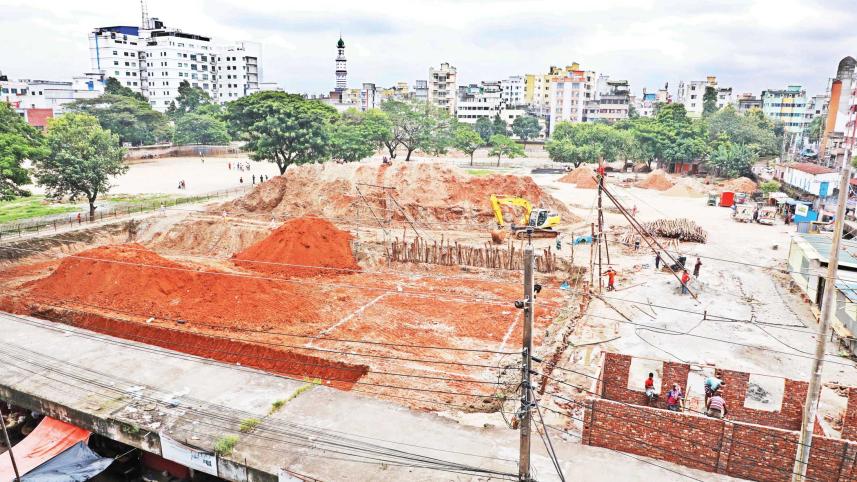Why construct a market inside Dhupkhola field?

In a city already devoid of enough playgrounds, the decision by the Dhaka South City Corporation (DSCC) to build a market inside the Dhupkhola field is disconcerting, to say the least. The Dhupkhola field is not just a playground where people play different sports—it is a place where residents from nearby neighbourhoods come together to hang out and spend time with their friends and families. Therefore, constructing a market inside the field will most certainly change the entire characteristic of the field.
The Dhupkhola field also has a rich history of producing athletes who have gone on to represent Bangladesh at the highest levels of their respective sports. The first Test centurion of Bangladesh, Aminul Islam Bulbul, is just one cricketer of note who trained in the field. Mohammad Rafique, considered one of the best spinners Bangladesh has ever produced, is another. Former national team footballers such as Ataur and Mamun Babu also trained in Dhupkhola field. There are currently three cricket academies based in the Dhupkhola field, where around 500 cricketers practise on a regular basis. Who is to say that the next great Bangladeshi cricketer will not emerge from there? And what will happen to the fate of these 500 athletes once the market eats up a significant chunk of the field?
According to the DSCC plan, the authorities will construct a five-storey market to house the 394 shops set up around the fields, which will take up 0.62 acres of the field area. The city corporation is also going to construct walkways, seating arrangements, parking spaces, and a cafeteria, which will further reduce the field's space. All these will bring down the total size of the field to 4.01 acres from 7.47 acres. Right now, the 7.47 acres of the field area is split into three parts: Jagannath University field, East End Club playground, and an open field for everyone to use. The construction of the market, by significantly reducing the total field size, will affect everyone who wishes to use it.
Research by the Bangladesh Institute of Planners (BIP) shows that the city's fields barely meet 10 percent of the public demand. When open playgrounds are already in such short supply, why is the DSCC taking up a project that will reduce them even further? There seems to be no logical explanation to this. The director of the Dhupkhola Math (field) Development Project justified the decision by saying that the facilities were being built because of "space constraints." But what about the lack of playing fields in Dhaka? How will the authorities make up for that? We urge the authorities to seriously reconsider their decision and find an alternative site for the market's construction.



 For all latest news, follow The Daily Star's Google News channel.
For all latest news, follow The Daily Star's Google News channel.
Comments